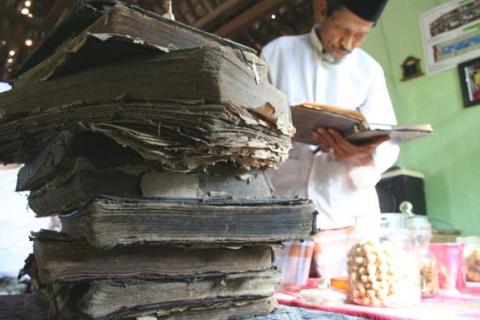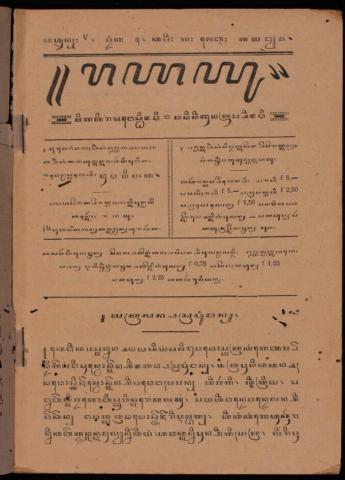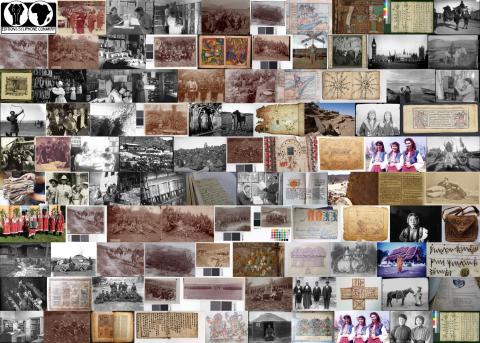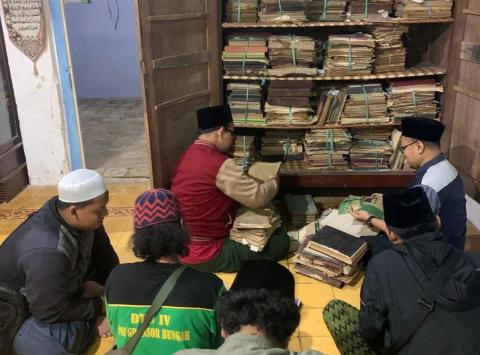
Aims and objectives
This pilot project is based on the results of recent field research work in Western Sumatra and deals with written Islamic heritage of this region, especially Sufi literature. The manuscript collections are preserved mainly in the surau * of Sufi brotherhoods (Shattariyah, Naqshbandiyah) with a small minority kept in private collections. All these collections of manuscripts are written in Jawi (Arabic Malay) or Arabic and consist of examples of al-Qur'an, tafsir, works on fiqh and tasawwuf as well as agiographical treatises of auliya' (Muslim saints), historical and cultural works of Minangkabau region. There are some unique examples of calligraphy and illumination, in particular in the mountain regions of Minangkabau with the traces of its Hindu-Buddhists past. Such regions which are difficult to access and still remained unexplored can give different opportunities and treasures to investigate. Further studying of such written heritage can contribute much to the history of Sumatra, of Islam and Sufism and especially to the studying of the local form of Islam of Minangkabau. Most of these manuscripts are in a very poor, almost illegible state because of the humid climate and insects and can vanish and be lost to research within 10-20 years.
The research staff of Andalas University in Padang has already started the work of digitisation in some surau in a project led by Mrs. Zuriati, with whom this project will be coordinated. It is hoped that these two projects will supplement each other. The project of Mrs. Zuriati covers the territory where the main surau of Shattariyah brotherhood are located in the villages close to Padang (max. 50km) while the distant Shattariyah surau still remained unexplored. So the field work of this pilot project will be held partly in the region of Agam located rather far from Padang (100-300 km) in the mountain villages (Sejunjung, Palembayan) where it is planned to visit approximately five surau and identify their collections. The most valuable examples and those which are in the worst condition will be digitised.
This project will also investigate Naqshbandiyah manuscript collections preserved in the surau around Padang. Naqshbandiyah is another Sufi brotherhood which is widespread in the Minangkabau region and were introduced in Western Sumatra even earlier than Shattariyah, in the 17th Century. It is also planned to meet with the owners of private collections in Padang, identify their collections and digitise where possible.
As the outcome of this pilot project, a report of the survey will be prepared which will contain the guidelines to develop a future major digitisation project in the surau of Sufi brotherhoods in Western Sumatra. The most endangered and rare manuscripts will also have been digitised and preserved.
* Islamic study centres led by Sufi sheikhs as well as the places of Sufi ritual practice and preserving manuscripts.
Outcomes
As a result of this pilot project 15 collections of manuscripts were examined: 7 private collections and 8 collections of surau belonging to two Sufi brotherhoods, Shattariyah and Naqshbandiyah - in total about 100 manuscripts in Jawi and Arabic.
The work was carried out in Padang, the capital of Western Sumatra, and 4 districts: Padang Pariaman, Limapuluh Kota, Agam and Pasaman (Barat and Timur) . During this pilot project seven manuscripts were digitised (total pages 329, 170, 457, 12, 39, 208, 136).
It is interesting to note that all private collectors are also the adherents of Sufi brotherhoods. The tradition of preserving manuscripts at home is especially venerated by Minang people like preserving sacred objects. In general, access to the manuscript collections is possible, although in some places it was difficult and even impossible.
The located manuscripts partly deal with classical Islamic education (hadis, usul ad-din, fiqh,tafsir,samples of al-Qur'an, al-'ulum al-naqliyah, al-'ulum al-naqliyah) and partly with Sufi teachings and ritual practices of the above mentioned two tariqahs (tasawuf, tauhid, hikmah, manaqib) and traditional medicine.(thibb) as well as history of Islam. Almost half of the manuscripts date back to the eighteenth century and are written in Jawi and Arabic. Some of them are the unique examples of Islamic bindings of Southeast Asian type and different types of illumination. Some of the collections contain works on the peculiarities of regional Islam, namely treatises on the history of local Islam, agiographical works and works on Naqshbandiyah and Shattariyah mystical conceptions. The manuscripts describing suluk mystical ritual can be especiallly distinguished as the ritual of suluk is practiced only in the remote corners of Sumatra and is considered to be old-fashioned and unpopular among young generations of Muslims.
During the previous 50 years a great number of surau manuscripts were destroyed, burnt or disappeared and evidence of this was noticed.
It is hoped that a future major project will be able to digitise approximately 90 of these already observed manuscripts together with approximately 300 additional manuscripts.
The records copied by this project have been catalogued as:
- EAP205/1 Surau al-Amin Collection of Sufic Texts
- EAP205/2 Surau Gadang Ampalu Collection of Sufic Texts
- EAP205/3 Surau Sheikh Abdurrahman Collection of Sufic Texts
- EAP205/4 Surau Tuo Taram Collection of Sufic Texts
Due to the cyber-attack on the British Library in October 2023, the archives and manuscripts database is currently inaccessible and we are unable to provide links to the catalogue records for this project.





